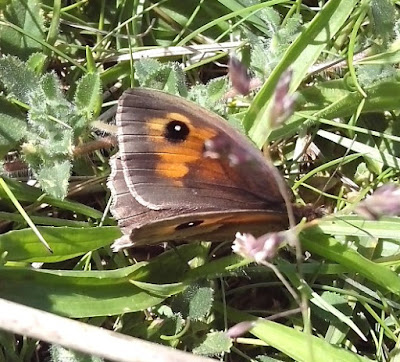We take photos when and where we can. Saturday provided quite a variety of wildlife...
my all time favourite, the Fulmar, perching on the rocks. I know I posted these before but on this walk I can never resist taking a photo of them!
Looking out from a part of Burry Holms towards the sea there was quite a large gathering of Herring Gulls.
Another favourite - the Gannet. Several were sitting on the sea in the distance and occasionally 2 or 3 flew past us, quite close by, on the incoming tide.
Record shot of a Shag. Smaller than a Cormorant and generally harder to see.
Above and below a Grey Heron. Unmistakeable and most non birding people can identify these.
Landing shot here, gives you an idea of the sheer size of them.
Green Carpet
Scallop shell - a 'WOW' moth !
Grass rivulet - tiny but has a lovely sandy colouring.
Lychnis - common this time of year.
This micro moth appreared on my husband's arm during our walk on Saturday. Agapeta zoegana. Very bright yellow with some brown markings and a yellow head. Quite well distibuted throughout UK.
A large fluffy caterpillar yet to be identified!
Meadow Brown butterfly trying to hide in the grass, another record shot.
The coastal paths are edged with lots of these bright purple flowers. I will endeavour to identify these too.
On our return walk we spotted this! Not the best photo but it was quite remarkable and something one wouldn't forget in a hurry. We got out the insect book and found it straightaway. It's a type of Scorpion Fly called Panorpa germanica.
Antoher insect we found was Corizus hyoscyami - an easily recognisable bug. Found throughout England and Wales. You can do a general google search on it's name to see images online! It's red and black!


























































